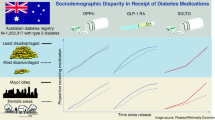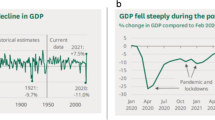Abstract
Objective
The purpose of this paper was to use a linked dataset to compare health care utilization rates and costs between income groups in Saskatoon, Canada.
Methods
The Canadian Community Health Survey was linked to hospital, physician and medication data in Saskatoon.
Results
Of 3,688 eligible participants, 3,433 agreed to the health survey and data linkage with health records (83.7% overall response). Low-income residents were 27–33% more likely to be hospitalized and 36–45% more likely to receive a medication than middle- and higher-income residents, but were 5–7% less likely to visit a physician over a one-year period. In comparison to middle-income residents, low-income residents had 56% more high users of hospitals, 166% more high users of physicians and 90% more high users of medications. Low-income residents had 34–35% higher health care costs overall than middle- and high-income residents. After multivariate adjustment for increased disease prevalence, low income had a reduced association with high health care utilization.
Conclusions
The results demonstrate that residents with lower income are responsible for disproportionate usage of hospitals, physicians and medications; due mainly (but not entirely) to higher disease prevalence.
Résumé
Objectif
Utiliser un ensemble de données interreliées pour comparer les taux et les coûts d’utilisation des soins de santé entre différentes catégories de revenu à Saskatoon, Canada.
Méthodes
Les données de l’Enquête sur la santé dans les collectivités canadiennes ont été reliées à celles de la base de données sur les hôpitaux, les médecins et les médicaments de Saskatoon.
Résultats
Des 3 688 participants admissibles, 3 433 ont accepté qu’un lien soit créé entre les données de l’Enquête et celles de leur dossier médical (taux de réponse de 83,7 %). Les résidents à faible revenu ont de 27 à 33 % plus de chances d’être hospitalisés et de 36 à 45 % plus de chances de recevoir un médicament que les résidents à revenu moyen et élevé, mais de 5 à 7 % moins de chances de consulter un médecin une fois par année. Comparativement aux résidents à revenu moyen, les résidents à faible revenu comptent 56 % plus d’utilisateurs d’hôpitaux, 166 % plus d’utilisateurs de services médicaux (médecins), et 90 % plus d’utilisateurs de médicaments. Chez les résidents à faible revenu, les coûts des soins de santé étaient de 34 à 35 % plus élevés que chez les résidents à revenu moyen et élevé. Après avoir effectué les corrections multidimensionnelles de l’augmentation du taux de prévalence de maladie, les résidents à faible revenu démontrent une association réduite avec l’utilisation fréquente des soins de santé.
Conclusions
Les résultats démontrent que les résidents à faible revenu utilisent de façon disproportionnée les hôpitaux, les médecins et les médicaments, et ce, principalement (mais non entièrement) en raison d’un taux plus élevé de prévalence de maladie.
Similar content being viewed by others
References
Hay DI. Economic arguments for action on the social determinants of health. Ottawa, ON: Public Health Agency of Canada, 2006.
Health Disparity Task Groups of the Federal/Provincial/Territorial Advisory Committee on Population Health and Health Security. Reducing health disparities–role of the health sector: discussion paper. Ottawa: Health Disparity Task Groups of the Federal/Provincial/Territorial Advisory Committee on Population Health and Health Security, 2004.
Mackenbach JP, Meerding WJ, Kunst AE. Economic implications of socioeco-nomic inequalities in health in the European Union. European Commission, 2007.
Statistics Canada. Measurement of healthcare utilization in Canada: Agreement between surveys and administrative records. Proceedings of Statistics Canada Symposium 2003: Challenges in survey taking for the next decade. Ottawa: Statistics Canada, 2003.
Statistics Canada. Canadian Community Health Survey — Methodological overview. Health Rep 2002;13(3).
Statistics Canada. Income Research Paper Series: Low Income Cutoffs from 1994–2003 and Low Income Measures from 1992–2001. (Catalogue no. 75F0002MIE — no. 0002). Ottawa: Statistics Canada, 2004.
Liu L, Reeder B, Shuaib A, Mazagri R. Validity of stroke diagnosis on hospital discharge records in Saskatchewan, Canada: Implications for stroke surveillance. Cerebrovascular Dis 1999;9:224–30.
Rothman KJ, Greenland S. Modern Epidemiology, 2nd ed. Philadelphia, PA: Lip-pincott Williams and Wilkins, 1998.
Hosmer DW, Lemeshow S. Applied Logistic Regression. New York, NY: Wiley, 1989.
Government of Saskatchewan. 2005–2006 Annual Statistical Report. Regina, SK: Saskatchewan Health, 2006.
Government of Saskatchewan. Public Accounts 2005–06 Volume 2: Details of Revenue and Expenses. Regina, SK: Government of Saskatchewan, 2006.
Statistics Canada. CANSIM Table 109–0200, 2001.
Nabalamba A, Millar WJ. Going to the doctor. Health Reports 2007;18:23–35.
Brownwell M, Lix L, Okechukwu E, Derksen S, De Haney S, Bond R, et al. Why is the health status of some Manitobans not improving? The widening gap in the health status of Manitobans. Report. Manitoba Centre for Health Policy, 2003.
Veugelers PJ, Yip AM. Socioeconomic disparities in health care use: Does universal coverage reduce inequalities in health? J Epidemiol Community Health 2003;57:424–28.
Yip AM, Kephart G, Rockwood K. Linkage of the Canadian Study of Health and Aging to provincial administrative health care databases in Nova Scotia. Int Psychogeriatrics 2001;13:147–58.
Kozyrskyj A, Lix L, Dahl M, Soodeen R. High-cost users of pharmaceuticals: Who are they? Manitoba Centre for Health Policy, University of Manitoba, 2005.
Author information
Authors and Affiliations
Corresponding author
Rights and permissions
About this article
Cite this article
Lemstra, M., Mackenbach, J., Neudorf, C. et al. High Health Care Utilization and Costs Associated with Lower Socio-economic Status: Results from a Linked Dataset. Can J Public Health 100, 180–183 (2009). https://doi.org/10.1007/BF03405536
Received:
Accepted:
Published:
Issue Date:
DOI: https://doi.org/10.1007/BF03405536




